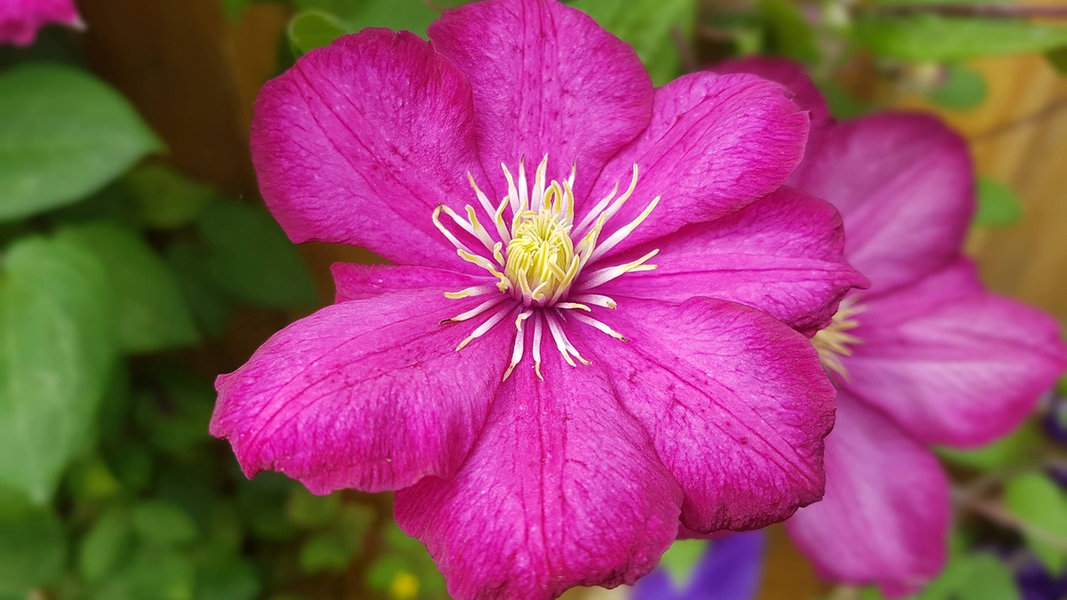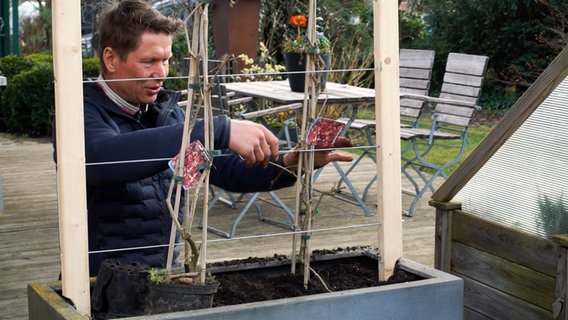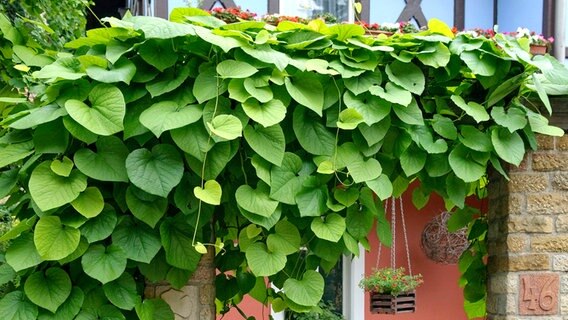Status: 07.06.2023 2:57 p.m
Clematis are true climbing artists and simply beautify every garden. But they also thrive in pots. What is important when it comes to care and planting?
It beautifies dreary wooden fences, house walls or carports as well as hedges and trees and is therefore considered the queen of climbing plants. With its beautiful flowers, the clematis, also known as clematis, is one of the most popular ornamental plants. This plant genus includes around 300 species and countless varieties.
Robust wild species for every season
Countless flowers: Many Clematis species are robust and long-lived.
Wild species such as alpine clematis (Clematis alpina), anemone clematis (Clematis montana) and common clematis (Clematis vitalba) are considered to be particularly robust. Their flowers are smaller than those of modern large-flowered varieties. On the other hand, they are less likely to be affected by diseases and are long-lived. Depending on the species, the flowering period extends from spring to autumn. The wild species grow particularly vigorously and do not need to be pruned regularly.
Clematis varieties with very large flowers
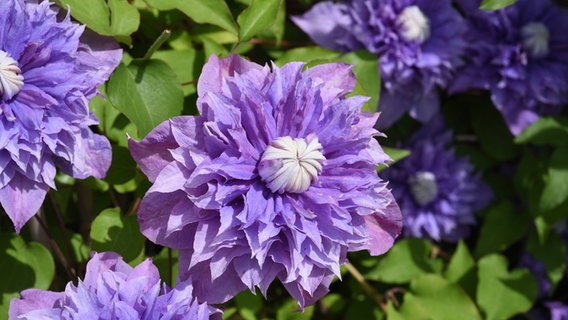
The large-flowered clematis variety “Multi Blue” blooms twice a year.
Although they are more sensitive and usually do not grow that large, they look impressive: so-called large-flowered hybrids impress with their magnificent flowers and often bloom twice a year. The flowers of the “The President” variety, for example, are impressive and can reach a diameter of between 12 and 18 centimeters. This clematis can climb up to five meters in height.
A no less magnificent variety is “Multi Blue” with its eight to twelve centimeter double flowers. With good care, it blooms almost all summer long. In contrast to many other varieties, however, it offers insects no food.
Large-flowered hybrids are usually cut twice a year: To stimulate a second flowering, old infructescence and the underlying pair of leaves are removed around June. Before sprouting in spring, the entire plant is cut back to just under a meter.
The right location for clematis
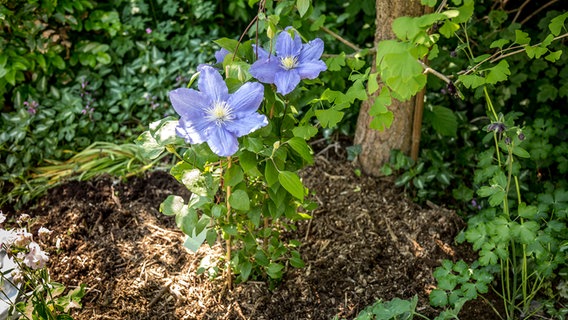
After planting, a layer of mulch protects the soil from drying out.
Clematis are among the rather undemanding plants. When choosing the location, however, you should make sure that the upper part of the plant tends to grow in the sun, but the “foot” is shaded up to a height of 30 to 50 centimeters and, if possible, does not dry out. It is therefore helpful to apply a layer after planting To spread mulch around the clematis and, for example, low-growing perennials such as to plant hostas or cranesbills. Especially in the first year, the clematis needs a lot of water and fertilizer. However, it does not tolerate waterlogging at all.
So who wants a rather compacted and loamy garden soil should provide the planting hole with a thick layer of gravel when planting. A climbing aid also makes it easier to grow if the clematis is not planted on a fence or on a tree. Clematis are also great companions to climbing roses. So that the fine roots of the clematis are not pressed by the rose, a root barrier can be placed vertically when planting. A tile or an old board is suitable for this.
Plant and fertilize clematis
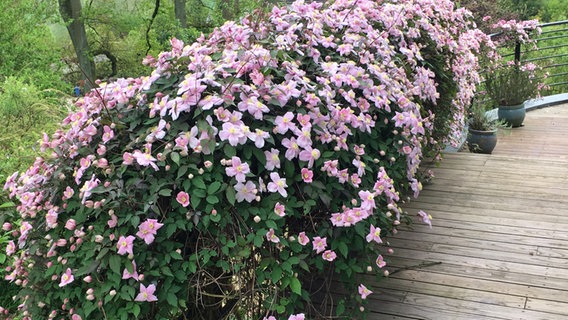
The railing can hardly be seen: under ideal conditions, clematis climbs many meters and blooms profusely.
Once the right location has been found, it is advisable to place the clematis so deep in the planting hole when planting that the two lower pairs of leaves are also buried. This is a precautionary measure should it be affected by the fairly common clematis wilt, a fungal disease. This increases the likelihood that the plant will sprout again after pruning. If the clematis is to climb a wall or concrete wall, the planting distance should be about 30 centimeters.
Good topsoil mixed with older Compost offers good starting conditions. Also mix in horn shavings as an organic long-term fertilizer when planting. The best planting time is in spring or between August and October.
Clematis also suitable for pots
The clematis is also suitable as a container plant for the balcony. The planter should hold at least 25 liters. Good drainage is very important: the bucket needs a drainage hole for water, a generous layer of expanded clay under the potting soil helps to avoid waterlogging. The substrate should be of good quality and the soil should be replaced after about four years. When buying, make sure that the selected variety is not higher than 1.50 to 2 meters. A grid on the wall or a sufficiently large climbing aid in the bucket are suitable for tendrils.
Further information

